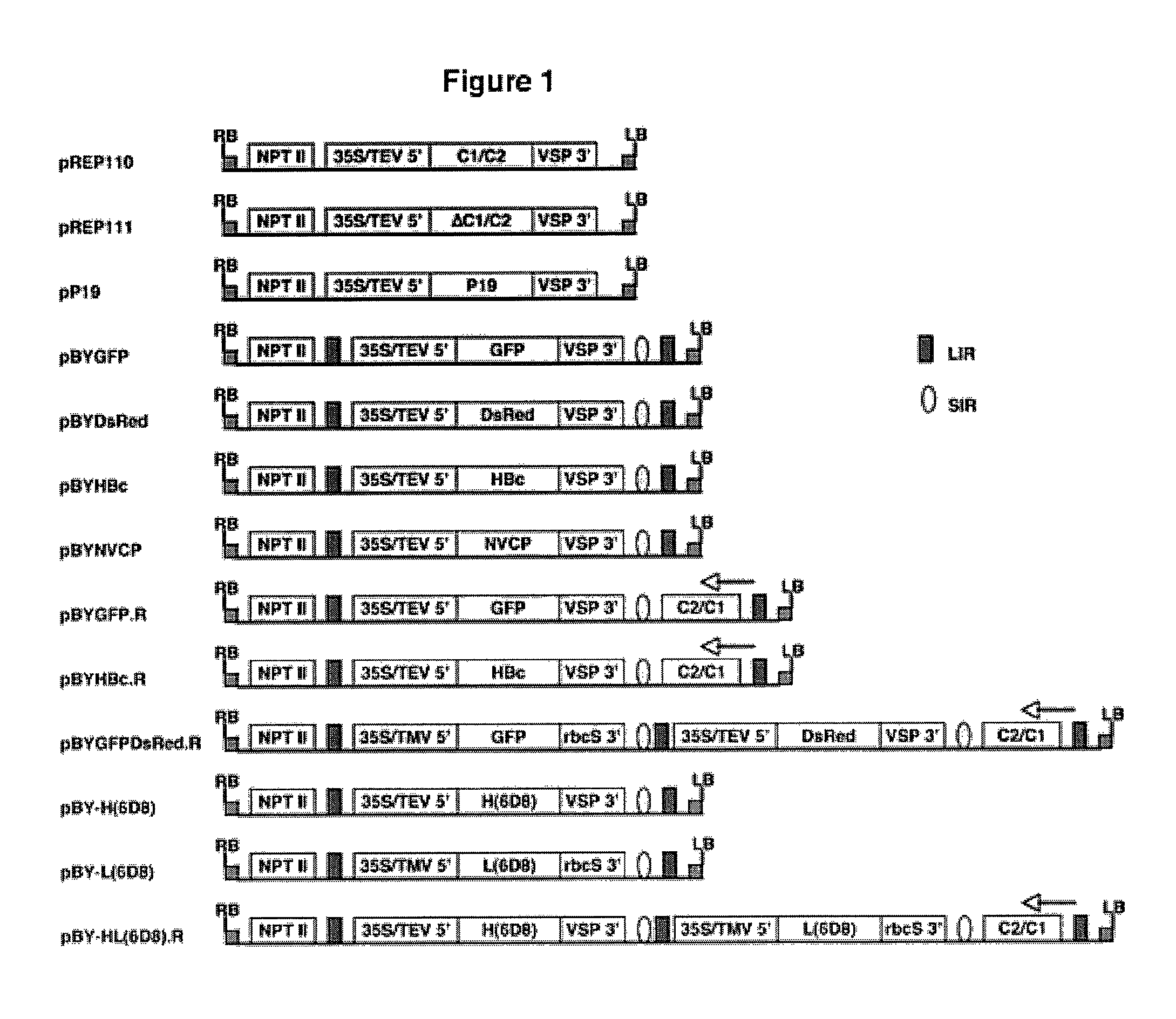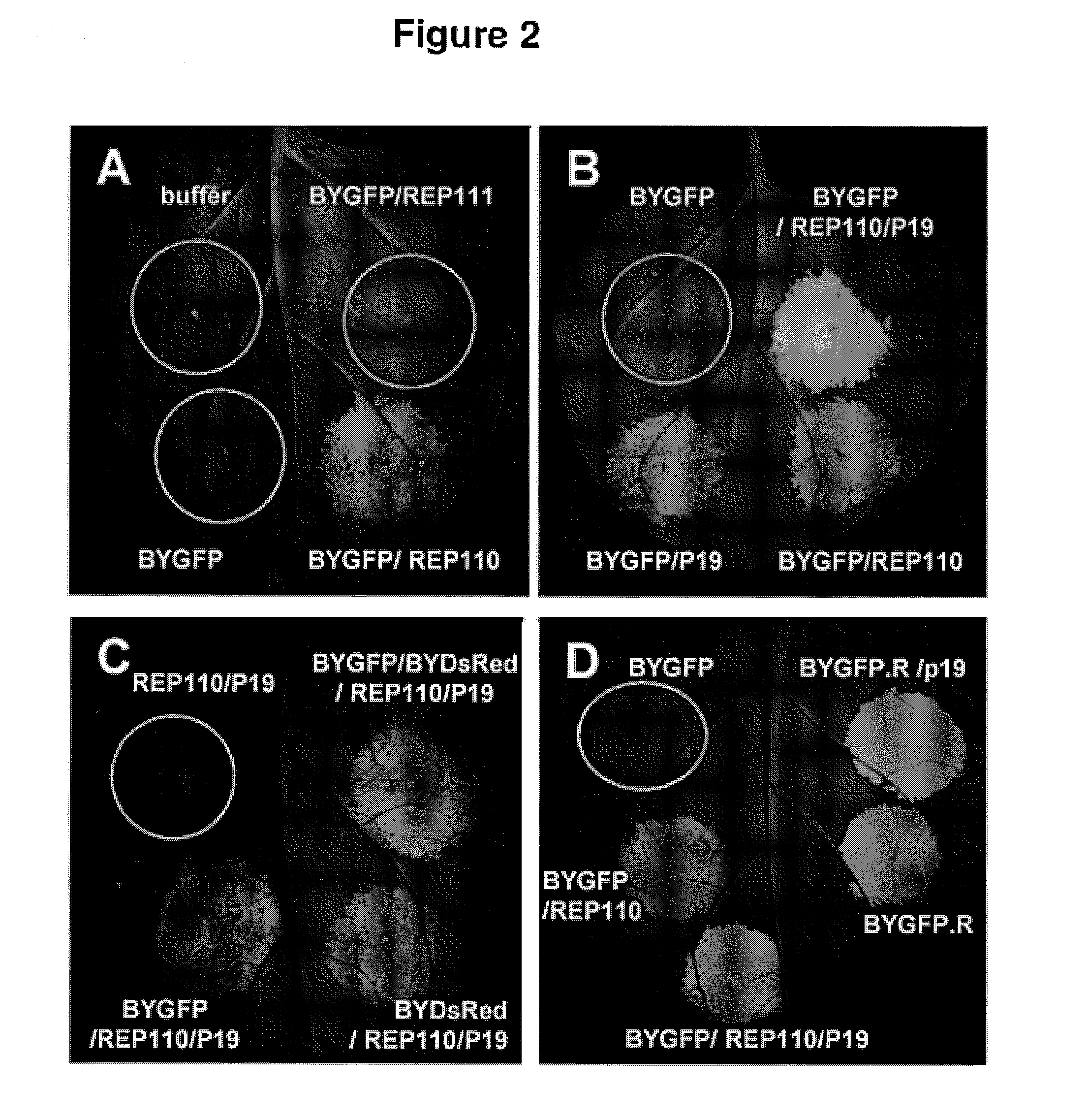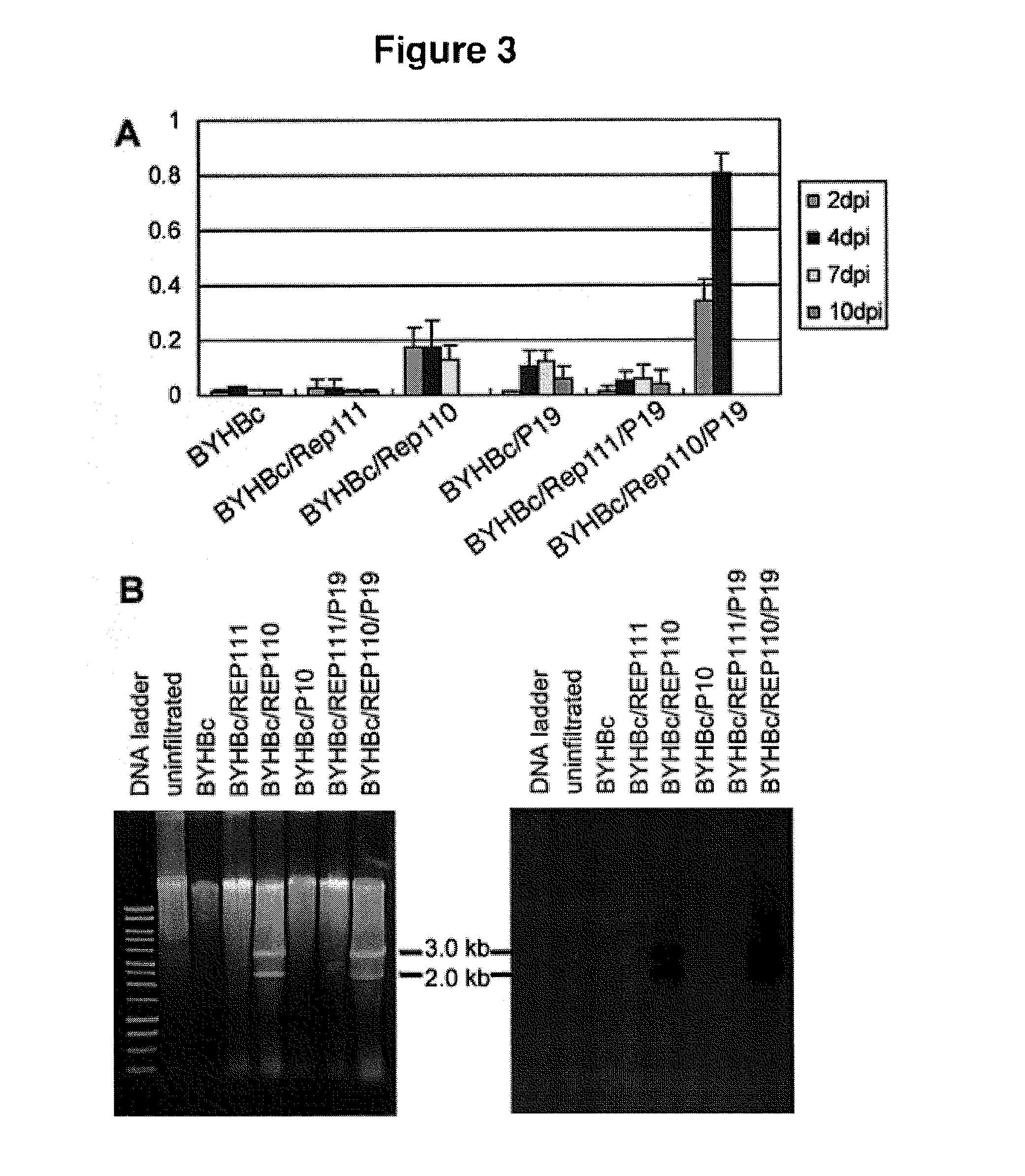DNA replicon system for high-level rapid production of vaccines and monoclonal antibody therapeutics in plants
a replicon and plant technology, applied in the field gene engineering, can solve the problems of preventing the practical commercial application of this system, preventing stable transgenic technology, and preventing efficient expression of plant transient gene expression systems, so as to overcome deficiencies in the art and enhance the realistic commercial application of this technology.
- Summary
- Abstract
- Description
- Claims
- Application Information
AI Technical Summary
Benefits of technology
Problems solved by technology
Method used
Image
Examples
example 1
I. Results
[0219]Agrobacterium-mediated co-delivery of a replicon vector and a Rep / RepA-supplying vector into plant leaf leads to efficient replicon formation and high-level protein production.
[0220]It was previously shown that formation of bean yellow dwarf virus (BeYDV)-based replicons in bombarded tobacco NT-1 cells resulted in increased transient expression of target proteins (Mor et al., 2003). To develop a scalable high-yield transient expression system, it was first tested if Agrobacterium-mediated delivery of replicon vectors into plant leaf can lead to replicon formation and increased target protein expression. N. benthamiana leaves were infiltrated with an Agrobacterium culture containing a replicon vector pBYGFP (FIG. 1) encoding the green fluorescent protein, or co-infiltrated with a mixture of two Agrobacterium cultures containing pBYGFP and one of the Rep-supplying vectors (pREP110 encoding both Rep and RepA or pREP111 encoding Rep only, FIG. 2). At 5 days post infiltra...
example 2
Expression of Recombinant Immune Complex (RIC)
[0254]This example illustrates the use of the tandem dual geminiviral replicon system to express a 2.87 kb gene to produce a 130 kDa protein: a modified immunoglobulin in which the gene encoding the heavy chain of monoclonal antibody 6D8 (Example 1, Results 4. Single-vector replicon system) is fused to Ebola virus glycoprotein GP1 (H2gpKDEL). Previous studies with tobacco mosaic (RNA) virus vectors showed limitations in the size of RNA molecules that could be expressed and translated to produce high molecular weight proteins. For example, the magnifection system can express genes up to 2.3 kb or up to 80 kDa protein (Gleba et al., 2007). Moreover, the current example demonstrates the co-expression of the heavy chain fusion H2gpKDEL and the light chain K3 in separate geminiviral replicons contained in the same T-DNA plasmid.
[0255]The construct pBYR-H2gpKDEL-K3 is analogous to and derived from pBY-HL (6D8).R described in Example 1 (Results...
example 3
Methods
[0259]Vector construction. A plasmid pBY036 containing the native BeYDV C1 / C2 genes between the 35S promoter / TEV 5′ UTR and the VSP terminator was described previously (Mor et al., 2003). The C1 / C2 expression cassette was released from pBY036 by XhoI / SacI digestion and inserted into pPS1 (Huang and Mason, 2004) from the same site, making binary vector pREP110 for expression of both Rep and RepA (FIG. 1). The binary vector pREP111 was similarly generated from pBY037 (Mor et al., 2003) for expression of Rep only. The P19 gene from tomato bushy stunt virus was amplified from pTBSV (H. Scholthof, Texas A&M University) using primers P19-Bam (5′-tcaaggatccatggaacgagctataca) (SEQ ID NO:1) and P19-Sac (5′-agaggagctatactcgccttctttttc) (SEQ ID NO:2), digested with NcoI and SacI and inserted in pPS1, yielding binary vector pPSP19.
[0260]Replicon vectors were constructed based on backbone vector pBY023 (Mor et al., 2003). The NVCP replicon in pBYsNV410 (Zhang and Mason, 2006) was released...
PUM
| Property | Measurement | Unit |
|---|---|---|
| temperatures | aaaaa | aaaaa |
| temperatures | aaaaa | aaaaa |
| temperatures | aaaaa | aaaaa |
Abstract
Description
Claims
Application Information
 Login to View More
Login to View More - R&D
- Intellectual Property
- Life Sciences
- Materials
- Tech Scout
- Unparalleled Data Quality
- Higher Quality Content
- 60% Fewer Hallucinations
Browse by: Latest US Patents, China's latest patents, Technical Efficacy Thesaurus, Application Domain, Technology Topic, Popular Technical Reports.
© 2025 PatSnap. All rights reserved.Legal|Privacy policy|Modern Slavery Act Transparency Statement|Sitemap|About US| Contact US: help@patsnap.com



